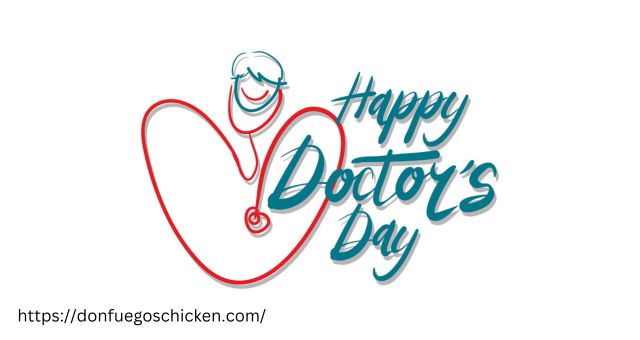Common Daily Activities That Delay Healing After A Car Accident

Ever feel like everything is in place after a car accident—attending physio sessions, getting adequate rest, eating balanced meals—yet recovery still seems slow? The delay might be linked to overlooked daily habits. Whether it’s the way a chair supports the back during long work hours or the method used to lift grocery bags, these seemingly minor actions will have a major impact on the healing process.
Rehabilitation from injuries by Motor Vehicle Accident Physiotherapy in Grande Prairie is undermined by ordinary daily routines that exacerbate trauma. While therapy sessions provide guidance, what goes on in between is also essential.
Overlooked Daily Activities That Stall Recovery
Recovering from a car accident takes time, and specific daily habits can hinder progress. Here are everyday activities that may delay healing, along with tips on how to avoid them.
1. The Vital Role of Rest In Initial Recovery
After a crash, muscles, tissues, and joints may suffer micro-injuries or inflammation. Returning too soon can hinder recovery. Gentle movement helps circulation and prevents further stress—resume activity only with medical or physiotherapy approval.
Signs of Overdoing It
More incredible pain, swelling, or tiredness with everyday tasks could show that the body is overextended. These signs are cues to reduce and refer to a physiotherapist for modified instruction.
Risk Activities
- Picking up heavy boxes or groceries.
- Coming back to work without medical clearance.
- Strenuous household tasks such as vacuuming, gardening, or rearranging furniture.
Balancing rest and movement is key to healing after a car accident. Use these tips to support a safe, steady, and effective recovery process.
2. Poor Posture During Work and Rest
Driving, office work, or even reclining with poor posture can stress the spine, shoulders, and hips, particularly after an injury. Slouching or slumping can lead to a prolonged recovery after a car accident, exacerbating pain and alignment problems.
How to Correct It
Using ergonomic chairs and lumbar rolls, along with taking frequent standing breaks, can help reduce strain on healing tissues. Posture and workstation height adjustments can facilitate better spinal alignment following auto injury.
3. Avoiding Movement Entirely
Although rest is necessary, prolonged immobility can lead to joint stiffness, muscle weakness, and decreased circulation—these consequences can frequently slow recovery after a vehicle collision.
Gentle Mobility is Key
Easy, directed movements like soft stretching and low-impact activities promote flexibility. By performing these exercises daily, one can improve flexibility and minimize the risk of injury.
Examples of Beneficial Movements
- Walking short distances indoors or outdoors.
- Soft shoulder or neck rolls.
- Compliance with prescribed physiotherapy exercises.
Injury movement should be gradual and supervised wherever possible.
4. Driving Too Soon
Driving necessitates twisting, turning, and reaction-motivated movements that tend to stretch healing areas, particularly the shoulders, back, and neck. Driving can also compromise reflexes due to pain or medication.
When It’s Safe to Resume
Driving after a car accident should only be resumed after receiving clearance from a doctor or physiotherapist. This ensures the soft tissues have healed sufficiently to handle sudden movements without risk.
5. Skipping Follow-Up Appointments and Physio Sessions
Missed appointments for physiotherapy can lead to unremedied inflammation, stiffness, and weakness. Inconsistent rehab can increase the risk of re-injury.
Why Regular Check-Ins Matter
Monitoring progress and modifying exercises to accommodate the current stage of healing is essential. Physiotherapists also watch for swelling and pain reactions.
Self-Care Is Not a Substitute
Internet exercises are not designed to meet personal needs. For safe and successful car accident rehabilitation, adhere to a professional’s auto injury physiotherapy treatment.
6. Using Screens Without Breaks
Excessive screen time, especially when accompanied by poor neck alignment, can exacerbate whiplash and shoulder strain.
Smart Screen Habits
Use break timers, elevate screens to eye level, and stretch regularly. These easy habits can aid in whiplash recovery and help minimize neck pain caused by prolonged screen time.
7. Poor Sleep Habits
Sleep is also necessary for tissue repair and reducing inflammation. Inadequate restorative sleep will extend pain and recovery.
Sleep Position Pitfalls
Poor pillows or sleeping on the hurt side will aggravate the pain.
Sleep Hygiene Tips
- Use a supportive pillow and mattress
- Sleep on your back with knees slightly raised
- Don’t lie on the hurt spot
Maintaining good sleep habits supports sleep recovery after injury and overall post-accident sleep quality.
Tips to Adjust Daily Routines for Better Healing
Recovery is not a matter of willpower. Braces, lumbar supports, and walking aids are not weaknesses—they’re shields for the recovering body.
- Knee braces or wrist splints can reduce strain.
- Cushions help maintain posture on long drives.
- Walking aids help reduce the risk of imbalance and falls.
Break It Down: Schedule Frequent Short Breaks
If work or study is unavoidable, set a timer. Movement breaks prevent stiffness and promote circulation.
- Light stretches every 30 minutes.
- Shoulder rolls and neck tilts decrease tension.
- Walk around the room or complete a fast lap outside.
Movement is medicine—dosage matters.
Fuel the Fix: Prioritize Sleep and Nutrition
The body requires building materials to repair itself.
- Sleep is essential for 7 to 9 hours.
- Add anti-inflammatory foods, such as berries, turmeric, and green vegetables.
- Hydrate and avoid excessive sugar and caffeine.
How Physiotherapy Can Support Faster Recovery
Physiotherapy restores body function through more than just exercises. Techniques like joint mobilization, stretching, and balance training help recover abilities after injury.
- Functional retraining mimics daily activities.
- Movements are adjusted to the healing stage.
- Therapists monitor reactions for safe progression.
Motor Vehicle Accident Physiotherapy in Grande Prairie empowers patients to trust their bodies again.
Healing Faster with Awareness and Professional Care
With professional guidance through Motor Vehicle Accident Physiotherapy in Grande Prairie, patients can avoid pitfalls and heal more effectively. At Junction Point Physical Therapy, customized care plans are created to steadily and safely guide patients through each recovery phase.
Schedule a consultation to ensure daily habits support recovery with guidance from a professional team.











